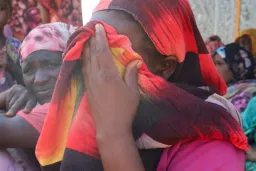By Ayan Hag Hersi
A photographer from the Global North with quality photography equipment and connections is sent to the Global South with the commissioned task to capture health problems experienced by communities.
The images taken by the photographer are utilised by global health charity and humanitarian organisations who rely heavily on the images to document issues, outbreaks and crisis and for the organisations’ functioning and operation.
Albeit, the images can be unethical and can exacerbate inequalities that must be addressed.
Addressing coloniality
The Kenyan author and academic Ngugi wa Thiong’o discussed the idea of linguistic decolonisation. Directing his views to African authors and writers, he confronted the dilemma they faced on using a different linguistic channel, such as, English, French, etc., than their indigenous languages.
He stated that maintaining African languages has a constructive role in a nation’s culture, history and identity. Likewise, I argue that similar to language, imagery also has constructive role in a nation’s culture, history and identity.
When capturing an image one takes possession of the subject and craft a narrative, a story or a message for release and distribution.
The narrative, the story or the message jointly with the photographic image will act as ‘ambassadors’ representing the individuals or the experiences photographed.
Images, therefore, hold power which can impact how individuals perceive themselves and how viewers see the photographed. This consequently places the photographed in a certain relation to the world.
If not ethically engaged a photographer risks liability to imagery dominance, diffusing colonial and hegemonic roots into modern day images used in global health, humanitarian and aid organisations.
Addressing consent, relevance and ethics
As an image is captured requesting consent and considering significant reflection on integrity and relevance are fundamental criteria.

Saidu Abdulrahman undertook the challenge to raise awareness of photography in Nigeria.
Photos depicting identifiable individuals in their most sensitive, confidential and undignified circumstances experiencing ill-health or environmental disaster or both have been published globally to a wide reaching audience, subjecting the individuals to exploitation and subjugation. Such images prompt the necessary questions whether consent was obtained from individuals photographed and the appropriateness of the photos.
To examine this, a group of global health researchers undertook a study investigating the appropriateness and respectfulness of images published in global health reports.
Subsequent to analysis and findings, the group developed a Framework of Good Practice based on four criteria: evidence of consent, relevance of the images to the report, integrity and respect for individuals and equity and appropriateness of the individuals photographed. Fairly new, the framework is yet to be utilised by global health actors.
Furthermore, several international organisations have released their ethical guidelines for photography. One such guideline is the Confederation for Cooperation of Relief and Development NGOs (CONCORD).
It stresses accurate representation, the prevention of stereotypes and respecting individuals preferences for identification among other points.
These guidelines are not necessary always adhered to, despite wide recognition of the demand for respect, consent, integrity and equity.
Promoting ethical and equitable practice
Where organisations have set codes of conduct on capturing images, it is the photographers’ responsibility to follow them.
However, the photographers can have no control over how the images are used and disseminated.
Organisations, therefore, have the duty to promote ethical photography where publishers, communications individuals and editors adhere to the codes of conduct.

Sani, who has worked as photo journalist for publications like Daily Trust, Leadership newspapers in the past, says he “love travelling to get other places’ lifestyle on camera.”
A photographer decides which images merit capturing and which images are suitable for sharing.
Ultimately, they are the ones who must ensure that photographs are taken with consent from the individuals being photographed, preserving their dignity.
When consent is sought from the individuals being photographed, it is to be documented and evidence shared with the organisations.
In this manner, organisations and photographers work together to establish an ethical basis for image capturing and publishing
Moreover, photographers are best positioned to provide the accurate context surrounding a photograph.
Photographers who adhere to ethical standards provide captions with the images taken, explaining the context of the images and detailing the individuals involved. Hence, ensuring that the context and the voice is respected and accurately represented.
Another way to accurately represent context and voice is to hire local photographers. Through fostering of partnerships with local people and hiring local experts on the ground, local knowledge, local awareness and a local insight will highlight precision of the context of the image.
In his book, The Foreign Gaze, Seye Abimbola writes, ‘…foreign gaze, whose power shapes our pose and what we can see or say’, hence, local experts will regulate making sure what we see is accurate depiction of the photograph taken.
Imagery is a powerful narrative tool. As mentioned, and with the concept of the Kenyan author and academic Ngugi wa Thiong’o, imagery also has a constructive role in representing a nation’s culture, history and identity.
Unethical and inequitable usage of images lead to skewed narratives that are detrimental to a nation’s identity and dignity.
The author, Ayan Hag Hersi, is a journalist and researcher. She previously worked at the BBC, WHO and SIPRI. She writes about epistemology, ethics and global health.
Disclaimer: The views expressed by the author do not necessarily reflect the opinions, viewpoints and editorial policies of TRT Afrika.















